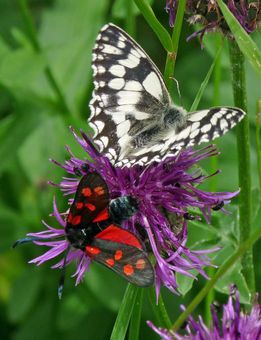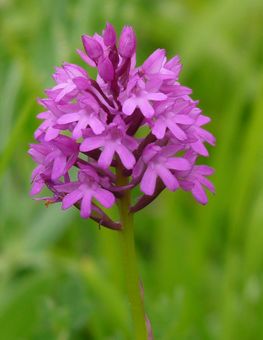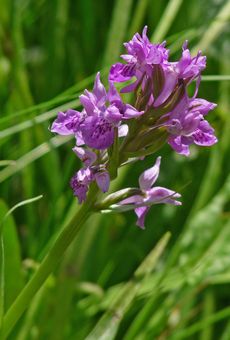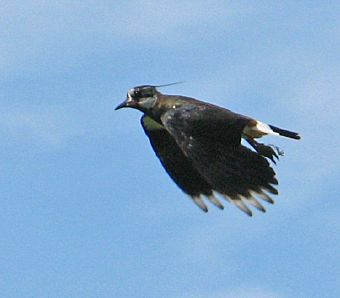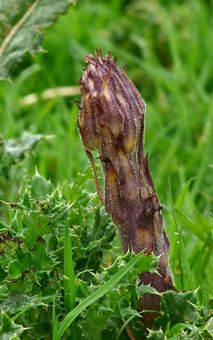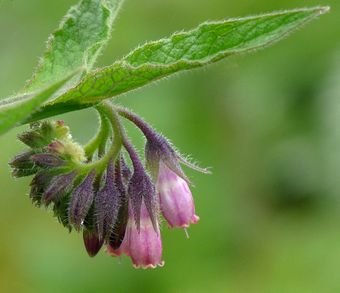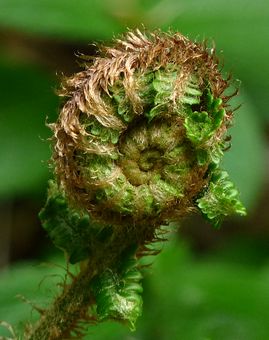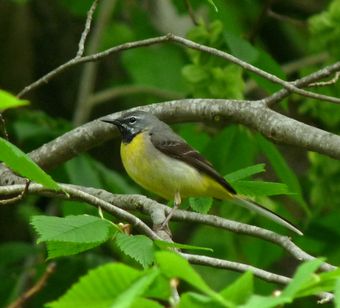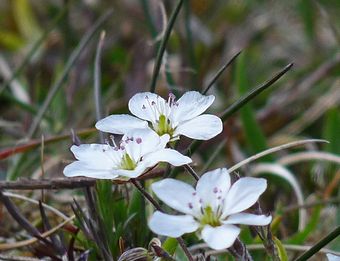WFV, Teesmouth - Saltholme RSPB reserve, 13th July 2010
 Tees TransporterA group of 13 participated in today's extended trip to Teesmouth which was led by Margaret and Stuart. When we set off, the weather looked very uncertain. We chose to go via the A1 to avoid the traffic heading for the Great Yorkshire Show. As we travelled further north the weather did seem to improve a little with occasional appearances by the sun. In Middlesbrough we headed for the Tees transporter bridge. There had been questions over whether we could go on this bridge with its 3 tonne weight limit. Maybe we should have had a baggage and people weigh in before we set off! We did cross on the transporter without any mishaps, and it was interesting to experience this engineering feat. Our destination, Saltholme RSPB reserve was not far beyond the transporter bridge. We stopped here briefly to use the facilities, before continuing on to Seal Sands. This was a very exposed site, and the windy conditions made it feel very cold. The Teesmouth area has a strange juxtaposition of industrial and wildlife landscapes. Pollution once wiped out the seal colonies here,but they are now back again and we enjoyed several sightings of seals at Greatham Creek and from one of the hides which looks over the mud flats. It was quite difficult to identify some of the more distant birds, as the scope bearer had unfortunately failed to bring the scope, but we did record dunlin, golden plover, avocets, shelduck, curlew and a large flock of knot. Botanical interest included sea lavender, great lettuce, perennial wall rocket and strawberry clover.
Tees TransporterA group of 13 participated in today's extended trip to Teesmouth which was led by Margaret and Stuart. When we set off, the weather looked very uncertain. We chose to go via the A1 to avoid the traffic heading for the Great Yorkshire Show. As we travelled further north the weather did seem to improve a little with occasional appearances by the sun. In Middlesbrough we headed for the Tees transporter bridge. There had been questions over whether we could go on this bridge with its 3 tonne weight limit. Maybe we should have had a baggage and people weigh in before we set off! We did cross on the transporter without any mishaps, and it was interesting to experience this engineering feat. Our destination, Saltholme RSPB reserve was not far beyond the transporter bridge. We stopped here briefly to use the facilities, before continuing on to Seal Sands. This was a very exposed site, and the windy conditions made it feel very cold. The Teesmouth area has a strange juxtaposition of industrial and wildlife landscapes. Pollution once wiped out the seal colonies here,but they are now back again and we enjoyed several sightings of seals at Greatham Creek and from one of the hides which looks over the mud flats. It was quite difficult to identify some of the more distant birds, as the scope bearer had unfortunately failed to bring the scope, but we did record dunlin, golden plover, avocets, shelduck, curlew and a large flock of knot. Botanical interest included sea lavender, great lettuce, perennial wall rocket and strawberry clover.
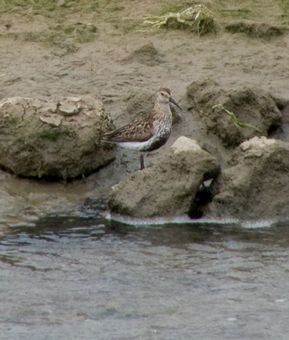 Golden PloverFollowing lunch at Seal Sands, we moved on to North Gare, an area of sand dunes and marsh. The botanists went off to botanise, and the rest of us walked along the path through the golf course and then down to the sea. Goldfinch, linnet and skylark were noted, but there weren't many birds to be seen. We continued on to the pier, before returning to the car park. The botanists stayed at North Gare whilst the remainder of the group returned to RSPB Saltholme. We got there at about 3.45, and some made a mad dash for the cafe which closed at 4pm. Just made it. There looked to be plenty to see here, but unfortunately we had little time to explore as the reserve closes at 5pm. The visitor centre is very modern and overlooks one of the lakes, where common tern, sand martin and pied wagtail were seen. It was sad to hear of the tern chicks being predated by the foxes. In the time remaining, most of us took the path to Saltholme Hide where yellow wagtails had been sighted. Initially there was no sign of them, but first a female and then a male perched on the fence posts giving us excellent views.
Golden PloverFollowing lunch at Seal Sands, we moved on to North Gare, an area of sand dunes and marsh. The botanists went off to botanise, and the rest of us walked along the path through the golf course and then down to the sea. Goldfinch, linnet and skylark were noted, but there weren't many birds to be seen. We continued on to the pier, before returning to the car park. The botanists stayed at North Gare whilst the remainder of the group returned to RSPB Saltholme. We got there at about 3.45, and some made a mad dash for the cafe which closed at 4pm. Just made it. There looked to be plenty to see here, but unfortunately we had little time to explore as the reserve closes at 5pm. The visitor centre is very modern and overlooks one of the lakes, where common tern, sand martin and pied wagtail were seen. It was sad to hear of the tern chicks being predated by the foxes. In the time remaining, most of us took the path to Saltholme Hide where yellow wagtails had been sighted. Initially there was no sign of them, but first a female and then a male perched on the fence posts giving us excellent views.
43 birds were recorded today. With the closure of the RSPB reserve, we set off back to North Gare to collect the botanists. They had seen an abundance of northern marsh orchids, and noted hybrid common spotted/northern marsh orchids, as well as seeing purple milk vetch. In total, 132 plants were recorded in flower/fruit across all sites. Unfortunately, butterflies were largely absent.
From North Gare we drove to Coneythorpe where we had booked our evening meal at the Tiger Inn. The food was superb and it was a lovely end to an enjoyable day out. It was raining heavily when we set off back to Bradford, arriving back at about 10pm.
Sue

